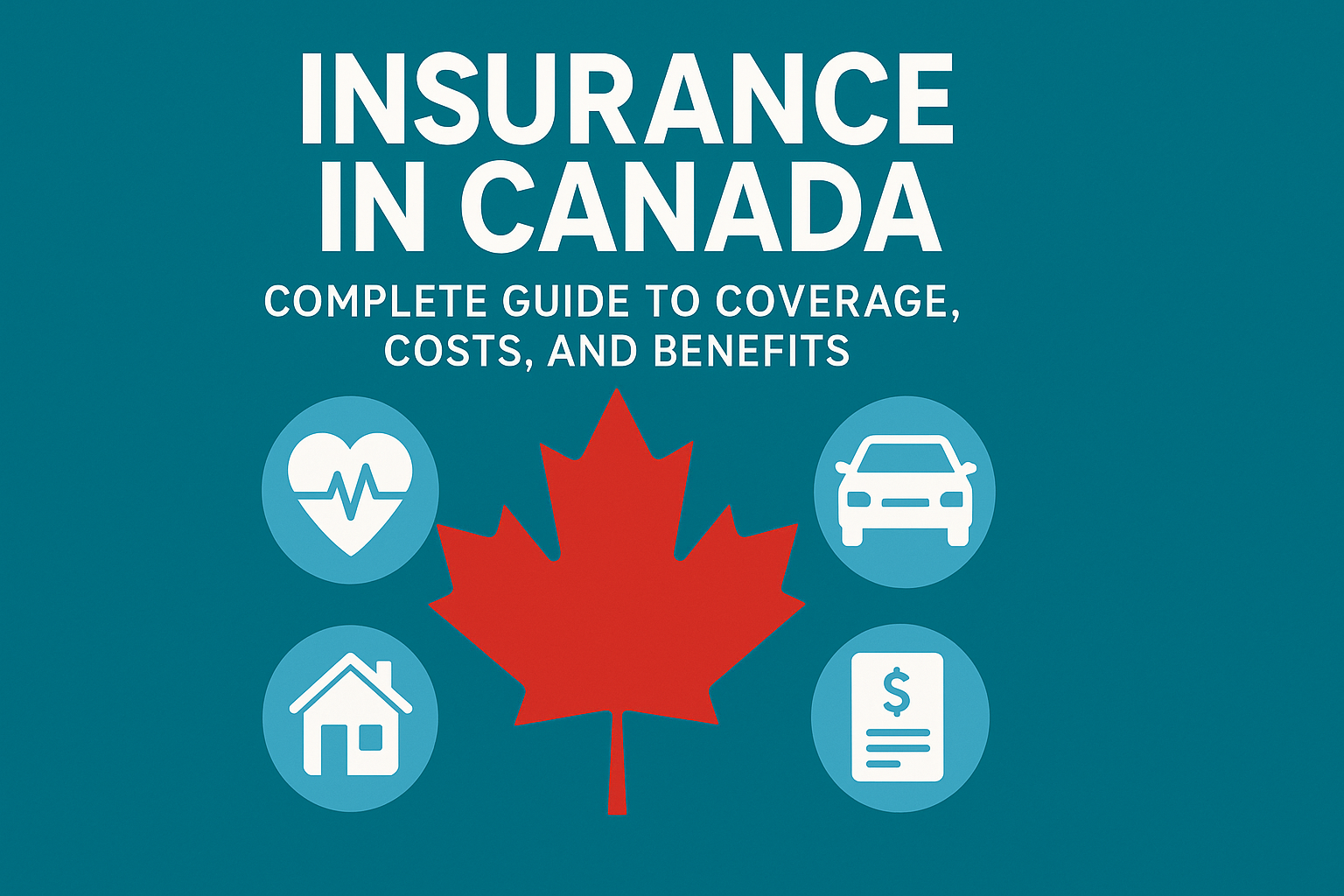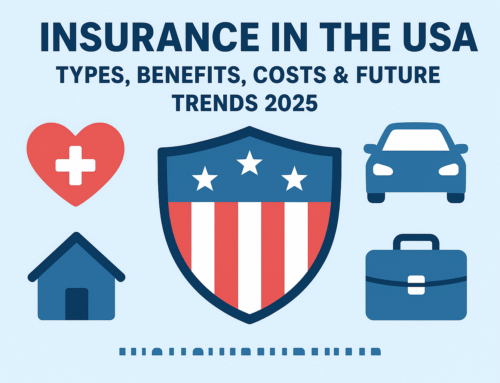Insurance in Canada: A Complete Guide for 2025

Insurance is an essential part of financial planning in Canada. Whether it’s protecting your home, car, health, or future income, insurance ensures that you and your family are financially secure during unexpected events. With a wide range of policies and providers available, understanding the Canadian insurance market is crucial for making informed decisions.
In this guide, we’ll explore everything you need to know about insurance in Canada, including the types of coverage, benefits, regulations, and tips for choosing the right plan.
Why Insurance Matters in Canada
Life is full of uncertainties. Accidents, illnesses, natural disasters, or financial setbacks can happen at any time. Without proper coverage, these events can lead to overwhelming costs. Insurance provides peace of mind by transferring financial risk from individuals to insurers.
In Canada, insurance is not just a personal choice—it’s often a legal requirement. For example:
- Auto insurance is mandatory in every province and territory.
- Home insurance is usually required by mortgage lenders.
- Health insurance is partially covered by provincial plans, but private health insurance is essential for services not included in public healthcare.
Types of Insurance in Canada
The Canadian insurance industry offers a variety of policies tailored to different needs. Below are the most common categories:
1. Health Insurance
Canada has a publicly funded healthcare system, but not all medical expenses are covered. Provincial health plans usually exclude services such as prescription drugs, dental care, vision care, and physiotherapy.
This is where private health insurance comes in. Many Canadians get coverage through their employers, while others buy individual plans. Private health insurance typically covers:
- Prescription medications
- Dental care (cleanings, fillings, orthodontics)
- Eye exams and glasses
- Mental health therapy
- Emergency medical care when traveling abroad
2. Auto Insurance
Auto insurance is mandatory for all vehicle owners in Canada. Each province regulates its own system, meaning coverage and costs can vary.
Basic auto insurance usually covers:
Liability: Protects you if you injure someone or damage property.
Accident Benefits: Covers medical expenses and income replacement after an accident.
Direct Compensation – Property Damage: Covers repairs to your car when another driver is at fault.
Optional coverage includes collision, comprehensive (fire, theft, vandalism), and roadside assistance.
3. Home Insurance
Your home is likely your biggest investment, and protecting it is vital. While not legally required, most mortgage lenders demand proof of home insurance.
Typical home insurance policies in Canada include:
- Property coverage: Protects your house and personal belongings.
- Liability protection: Covers you if someone gets injured on your property.
- Additional living expenses: Pays for temporary housing if your home becomes uninhabitable.
Renters can also buy tenant insurance to protect personal belongings and liability.
4. Life Insurance
Life insurance provides financial support to your family in the event of your death. There are two main types:
- Term life insurance: Covers you for a set period (10, 20, or 30 years). It’s affordable and ideal for young families.
- Permanent life insurance: Provides lifelong coverage with an investment component. It’s more expensive but builds cash value.
5. Travel Insurance
Travel insurance is essential when leaving Canada. Provincial healthcare doesn’t cover international medical expenses, and even a short hospital stay abroad can cost thousands of dollars. Travel insurance usually covers:
- Emergency medical care
- Trip cancellations or interruptions
- Lost luggage
- Flight delays
6. Business Insurance
Canadian entrepreneurs and small businesses rely on insurance to protect against risks such as lawsuits, property damage, or cyberattacks. Common policies include:
- General liability insurance
- Commercial property insurance
- Professional liability (errors and omissions)
- Cyber liability insurance
How Insurance Works in Canada
Insurance in Canada operates on the principle of risk-sharing. Policyholders pay premiums to insurance companies, which pool the money to cover claims. Regulations are strict, ensuring fairness and financial stability in the industry.
Key points to know:
Insurance is regulated provincially and federally.
Companies must be licensed by the Office of the Superintendent of Financial Institutions (OSFI).
Provincial regulators ensure fair pricing and consumer protection.
Cost of Insurance in Canada
The cost of insurance depends on many factors, including the type of coverage, location, age, and lifestyle. For example:
Auto insurance: Ontario is the most expensive province, while Quebec has lower rates.
Home insurance: Costs depend on property value, location, and risks such as flooding.
Life insurance: Premiums vary by age, health, and smoking status.
On average:
Car insurance can range from $1,200–$2,500 per year.
Home insurance averages $1,000 annually.
Health insurance costs about $100–$300 per month for individuals.
Benefits of Insurance in Canada
- Financial protection: Prevents unexpected expenses from draining savings.
- Legal compliance: Auto and certain business insurances are mandatory.
- Peace of mind: Helps families plan for the future with confidence.
- Access to better care: Private health plans provide coverage for dental, vision, and mental health.
- Support for businesses: Protects companies from lawsuits and disruptions.
Tips for Choosing the Right Insurance in Canada
- Assess your needs: Identify which risks are most relevant to your lifestyle.
- Compare providers: Don’t settle for the first quote—compare multiple insurers.
- Bundle policies: Many companies offer discounts for combining home and auto insurance.
- Review coverage limits: Make sure your policy covers your actual risks.
- Check customer reviews: Choose insurers with strong reputations for claim handling.
- Work with a broker: Independent brokers can help you find the best deals.
Future of Insurance in Canada
The Canadian insurance industry is evolving rapidly with the help of technology. Trends to watch include:
- Digital platforms: Online applications and claims are becoming the norm.
- Usage-based insurance: Auto policies based on driving habits tracked by apps.
- Climate change adaptation: Policies increasingly account for floods, wildfires, and extreme weather.
- AI-driven risk assessment: Faster underwriting and personalized pricing.
Conclusion
Insurance in Canada is more than just a safety net—it’s a financial necessity that protects your health, assets, and future. From auto and home insurance to life and business coverage, Canadians have access to a wide range of options tailored to their needs. By understanding the different types of insurance and comparing providers, you can make smarter decisions that ensure long-term financial security.
Whether you’re a new immigrant, a student, a homeowner, or a business owner, having the right insurance in place allows you to focus on building your future with confidence.
Read Also:


Leave A Comment